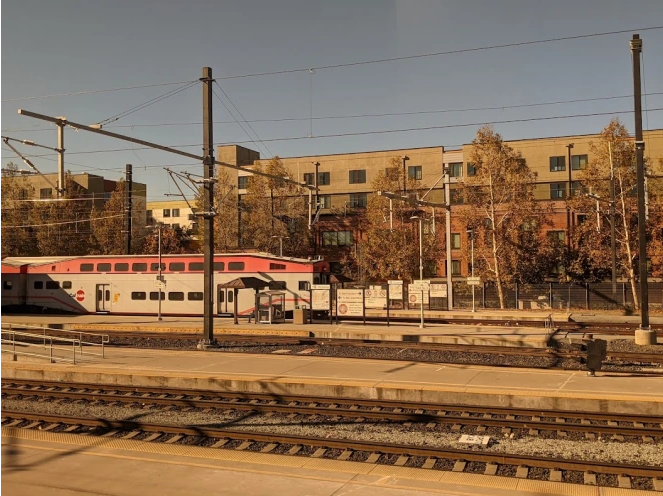Editor’s Note: this article originally appeared in Green Caltrain and is republished with permission.
At a special meeting on December 6, the Caltrain board approved updates to the price tag and schedule for the electrification project. Based on an in-depth review and a settlement of disputes with the contractor Balfour Beatty, the price tag has increased by an additional $100 million, but the scheduled delivery date is still 2024. Board members from all three counties said they were committed to pursuing funding to complete the project focusing on federal and state sources.
New detailed updates to the schedule and cost
In June, Caltrain announced that the schedule had slipped to 2024 and the price tag had increased by $333 million, based on an updated risk assessment from the Federal Transit Administration. Caltrain used the FTA’s analysis as a base for their own in-depth assessment of the cost and schedule that produced the higher price tag disclosed yesterday.
Following the bad news in June, Caltrain changed the management team for the project, hiring Pranaya Shrestha of HNTB full time as the Interim Chief of the Caltrain Modernization Program. Shrestha has worked on transit capital projects in Denver, Los Angeles, San Francisco, Portland, Orlando, and Seattle totaling over $9 billion. This year, Caltrain has also been building out its capital project team for other projects, led by Rob Barnard, Deputy Chief of Rail Development, who has successfully led megaprojects and smaller projects at Trimet in Portland.
The bulk of the cost increase this year, over $250 Million, comes from settling disputes with primary contractor Balfour Beatty that have been ongoing for about two years, and contributed to slow progress on the physical construction.
As the resolution with Balfour progressed recently, Caltrain reported that physical construction has been advancing more quickly. For example, the foundations for the poles that carry the electric wires are now 95 percent complete, up from 75 percent this past June.

$90 million for a new more flexible signal system
The cost increase also includes $90 million, adding a new layer to the signal system that controls raising and lowering gates when trains approach. Transit advocates including Caltrain Citizens Advisory Committee member Adrian Brandt had long been raising concerns that the new signal system design was less flexible than the current system and would result in longer gate downtime. Caltrain is adding a new flexible wireless layer, and will use the “dual speed check” system as a backup for freight trains and other partner rail systems that use the corridor in the future that aren’t equipped with the wireless system. More information about the new wireless system will be presented to Caltrain committees soon.

A detailed review of the schedule resulted in no overall changes, with some tweaks in specific milestones. The physical construction will be done soonest, with foundations scheduled to be done by the end of this month; the “traction power facilities” are to be completed in May and the stringing of wires is to be complete and powered up in August. The first electric trains are scheduled to arrive in the first quarter of 2022.

Board members committed to seek funding
Board members agreed to continue to pursue funding to complete the project starting with federal and state sources, including the state budget surplus. Funding from Measure RR, and borrowing against Measure RR, is second, and board members were not eager to seek funding from partner agencies as the least favored backup.
Board members mixed on project delivery reform
At the board workshop on regional governance options, several board members including Heminger, Gee, Pine, Hendricks and Davis had expressed an interest in participating proactively in regional discussion including consideration of strategies to improve the cost and timeliness of the region’s megaprojects. However, at the meeting to review the most recent cost increase, Board Members Stone and Chavez were not eager to consider project delivery reforms, mentioning the uniqueness of the U.S. and the Bay Area.






